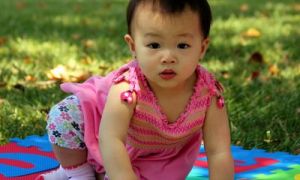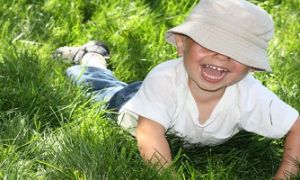Physical development includes not just the increase in length, height and weight of the child but also the size of organs as well as the development of various reflexes, motor skills, sensations and perceptions. Here is a brief overview of ways in which physical development in the first five years can be linked to EYLF.
0-1 Year
The first few years in a child’s life are a time of rapid physical growth – in fact, an infant's birthweight generally doubles by 6 months and triples by the infant's first birthday! If all goes well, by the time, a baby is eight months, they can:
- Play with feet and toes
- Make effort to sit alone, though they need hand support
- Raise head and chest when lying on stomach
- Make crawling movements when lying on stomach
- Roll from back to stomach
- Reach for and grasp objects, using one hand to grasp
- Smoothly follow object or person with their eyes
- Make crawling movements using both hands and feet
- Take weight on feet when standing
- Watch activities across the room - eyes move in unison
- Turn head to the sound of voices
Most of these physical milestones demonstrate the baby’s inherent curiosity as they express wonder and interest in their environments as well as persistence in attempts to control their body. Such actions thus can be linked to EYLF Outcome 4 - Children are confident and involved learners – and particularly, Element 4.1, ‘Children develop dispositions for learning such as curiosity… enthusiasm, persistence, imagination and reflexivity.’
Between 8 and 12 months, babies are getting better at pulling themselves up besides using their hands and fingers; thus they can:
- Pull self to standing position when hands held and stand by pulling themself up using furniture
- Raise self to sit position, sits without support
- Make stepping movements around furniture
- Successfully reach out and grasp toy, transfer objects from hand to hand, hold biscuit or bottle, grasp spoon in the palm, but the poor aim of food to the mouth
- Pick up and poke small objects with thumb and finger, pick up and throw small objects
- Crawl quite fluently
- Use hands to feed self
- Show alert peripheral vision
- Roll the ball and crawl to retrieve
The physical milestones in this stage demonstrate increasingly complex sensory-motor skills and movement patterns and thus link to EYLF Outcome 3 - Children have a strong sense of wellbeing – and particularly to Element 3.2, ‘Children take increasing responsibility for their own health and physical wellbeing.
1-2 Years
As their gross and fine motor skills become stronger, children in this stage can:
- Takes two to three steps without support, legs wide and hands up for balance
- Dance in place to music
- Climbs onto the chair, crawls up the steps
- Kick and throw a ball, roll a large ball, using both hands and arms
- Finger feed themselves, drink from a cup, try to use a spoon/fork
- Begin to run, revert to crawling if in a hurry
- Scribble with pencil or crayon held in a fist, turn pages of the book, two or three pages at a time
- Squat to pick up an object
All these actions reveal openness to new challenges and discoveries as well as persistence when faced with challenges and when first attempts are not successful. Physical development at this stage can thus be linked to EYLF Outcome 1- Children have a strong sense of identity – and particularly to Element 1.2, ‘Children develop their emerging autonomy, inter-dependence, resilience and sense of agency’.
2-3 Years
After two, children are not getting better at using fingers, walking, running, climbing and jumping easily but developing balance and physical coordination skills as well. They can:
- Catch a ball rolled towards them
- Jump from low step or over low objects
- Attempt to balance on one foot
- Avoid obstacles
- Able to open doors
- Stop readily
- Move about moving to music
- Turn pages one at a time, hold a crayon with fingers, uses a pencil to draw or scribble in circles and lines
- Get dressed with help and self-feed using utensils and a cup
These actions demonstrate children’s growing spatial awareness and ability to orient themselves, moving around and through their environments confidently besides using their sensory capabilities and dispositions with increasing integration, skill and purpose to explore and respond to their world. They again link to EYLF Outcome 3 - Children have a strong sense of wellbeing – and particularly to Element 3.2, ‘Children take increasing responsibility for their own health and physical wellbeing.
3-5 Years
As children gain more control over their body and fine motor skills, they become stronger, more flexible and agile. They can at this stage:
- Dress and undress with little help
- Hops jump and runs with ease
- Climb steps with alternating feet
- Gallops and skip by leading with one foot
- Transfer weight forward to throw the ball
- Attempt to catch the ball with hands
- Climb playground equipment with increasing agility
- Hold crayon/pencil etc. between thumb and first two fingers
- Exhibit hand preference
- Imitate a variety of shapes in drawing, e.g. circles
- Independently cuts paper with scissors
- Toilet themselves, develop the ability to toilet train at night
- Feed self with minimum spills
- Enjoy learning simple rhythm and movement routines
These milestones show how growing ability to manipulate resources to investigate, take apart, assemble, invent and construct as well as using their senses to explore natural and built environments, thus linking to EYLF Outcome 4- Children are confident and involved learners and particularly, Element 4.4, ‘Children resource their own learning through connecting with people, place, technologies and natural and processed materials.
Also as children view and listen to printed, visual and multimedia texts and respond with relevant comments, questions and actions like dancing and colouring, their actions can be linked to EYLF Outcome 5 – Children are effective communicators – and especially Element 5.2, ‘Children engage with a range of texts and gain meaning from these texts.
In all these ways, physical development in the early years relates to children’s growing control over their own bodies, immediate environment, emerging autonomy and in the process prepares the ground for cognitive, language as well as social and emotional development.
References:
- Developmental milestones and the Early Years Learning Framework and the National Quality Standards, ACECQA
- The Early Years Learning Framework For Australia, ACECQA


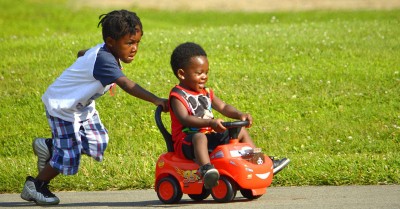

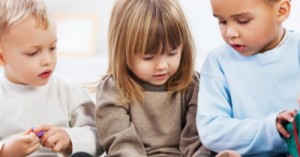
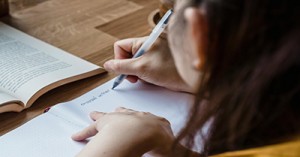

 Toddlers have a greater understanding of the world around them by this stage. Their cognitive development (also known as intellectual development and thinking skills) continues
Toddlers have a greater understanding of the world around them by this stage. Their cognitive development (also known as intellectual development and thinking skills) continues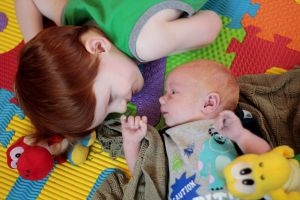 Infants begin to develop trust when parents begin to fulfil their needs. Such as changing an infant's nappy when needed, feeding on request and holding
Infants begin to develop trust when parents begin to fulfil their needs. Such as changing an infant's nappy when needed, feeding on request and holding Beginning at birth the construction of thought processes, such as memory, problem solving, exploration of objects etc, is an important part of an infant’s cognitive
Beginning at birth the construction of thought processes, such as memory, problem solving, exploration of objects etc, is an important part of an infant’s cognitive Toddlers want to do more on their own and do not like it when you begin to establish limits on their behaviour. Tantrums can become
Toddlers want to do more on their own and do not like it when you begin to establish limits on their behaviour. Tantrums can become Your preschooler is now able to focus their attention more accurately and is less influenced by distractions. The intensity of questions increase as your child
Your preschooler is now able to focus their attention more accurately and is less influenced by distractions. The intensity of questions increase as your child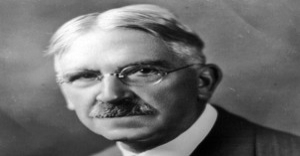 John Dewey is often seen as the proponent of learning by doing – rather than learning by passively receiving. He believed that each child was active,
John Dewey is often seen as the proponent of learning by doing – rather than learning by passively receiving. He believed that each child was active, Toddler advance and gains new skills in Gross Motor Development milestones achieved throughout earlier years. Co-ordination and challenges that could not be performed before such
Toddler advance and gains new skills in Gross Motor Development milestones achieved throughout earlier years. Co-ordination and challenges that could not be performed before such Erik Erikson developed a psychosocial theory to understand how we each develop our identities through eight stages of psychosocial development from infancy to adulthood. The
Erik Erikson developed a psychosocial theory to understand how we each develop our identities through eight stages of psychosocial development from infancy to adulthood. The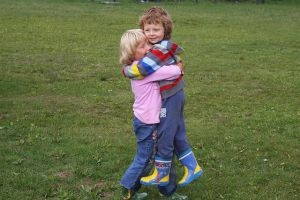 At this point preschoolers begin to interact effectively with others. Play becomes more innovative and organized and “boyfriend” or “girlfriend” begins to emerge. Preschoolers have
At this point preschoolers begin to interact effectively with others. Play becomes more innovative and organized and “boyfriend” or “girlfriend” begins to emerge. Preschoolers have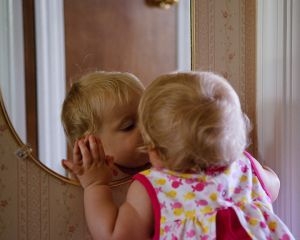 From now, babies begin to identify and respond to their own feelings, understanding other's feelings & needs and interact positively with others. A baby's social and
From now, babies begin to identify and respond to their own feelings, understanding other's feelings & needs and interact positively with others. A baby's social and
